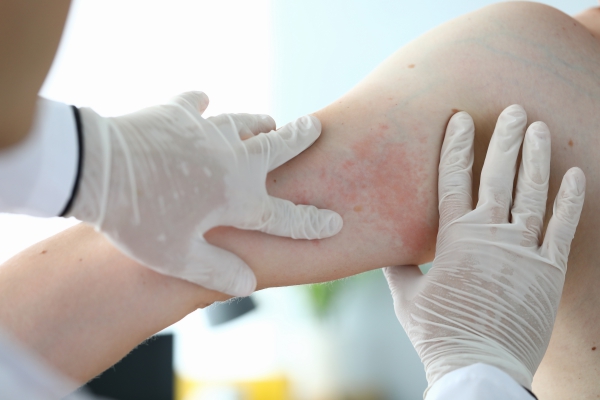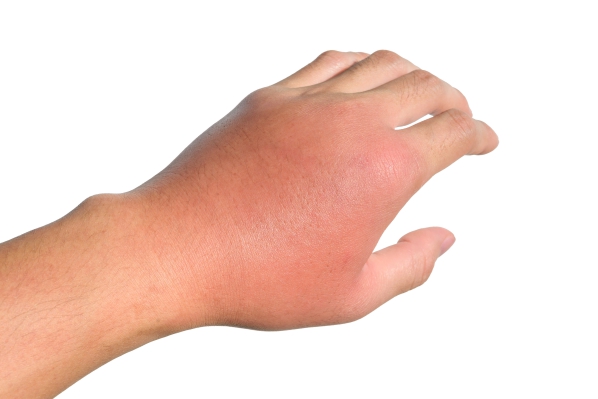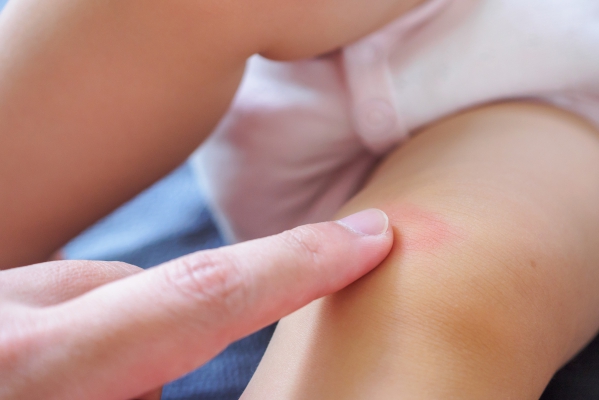Cellulitis, Skin infection, Red skin, Swelling, Bacterial infection, Antibiotics
Description : Cellulitis is a common and serious infection of the skin. The affected area of the skin appears
Article Details :
What is cellulitis?
Cellulitis is a common and serious infection of the skin. The affected area of the skin appears red and swollen and is characteristically warm and painful to the touch. This condition usually occurs due to a breach in the skin through which the bacteria enters. In addition, the breach in the skin is often not apparent to the naked eye. Cellulitis most commonly affects the lower legs but may also affect the face, arms and other areas.
As cellulitis is not a reportable disease, its exact frequency is uncertain. However, it is a relatively common infection that affects people of all ages, races and ethnic groups. In addition, people aged above 45 years are most commonly affected by cellulitis.
If cellulitis is left untreated, the infection can spread to other parts of the body through the lymph nodes and bloodstream, and become a life-threatening condition.
What are the causes of cellulitis?
Cellulitis occurs when bacteria enters the skin through a breach in the skin. The most common bacteria causing cellulitis are streptococcus and staphylococcus. The breach in the skin can be in various forms such as a dry, swollen or flaky skin or surgery sites, puncture wounds, cuts or an athlete’s foot. Unfortunately, the frequency of a more serious and dangerous infection known as methicillin-resistant Staphylococcus aureus (MRSA) is on the rise nowadays. The lower legs are the most common location of cellulitis but can it can also affect the arms, face or other parts of the body.
What are the risk factors for cellulitis?
There are several factors which may increase your risk of developing cellulitis and these include:
- A breach in the skin: A breach in the skin provides an entry point for the bacteria. The breach in the skin can be in various forms such as a dry, swollen or flaky skin or surgery sites, puncture wounds, cuts or an athlete’s foot.
- A history of cellulitis: If you have had cellulitis before, you are at an increased risk of developing the condition again.
- A weakened immune system: Having a weakened immune system- due to diabetes, leukaemia or HIV/AIDS- can make you more prone to infections. In addition, certain medication may also contribute to a weakened immune system.
- Obesity: Being obese or overweight may increase your risk of developing cellulitis.
- Lymphedema: This condition causes chronic swelling of your arms and legs and usually follows surgery.
What are the signs and symptoms of cellulitis?
The signs and symptoms of cellulitis are usually present on only one side of the body and include:
- Redness of the skin which tends to enlarge.
- An increase in temperature of the affected skin.
- Pain in the affected area.
- Fever.
- Blister formation.
- Skin dimpling.
- Malaise.
- Chills.
- Red lines streaking from the area of infection which indicates that the infection is spreading.
- abscesses
There are other conditions or diseases which may resemble cellulitis and these include:
- Burn wound infections.
- Erysipelas.
- Necrotizing fasciitis.
- Cutaneous anthrax.
- Graft-versus-host disease.
- Inflammatory carcinoma of the breast or other cutaneous cancerous lesions.
- Insect bites.
- Impetigo.
- Erythema multiform.
- Leukaemia cutis.
- Osteomyelitis.
- Pyoderma gangrenosum.
- Wells syndrome.
- Stevens-Johnson syndrome.

Making a diagnosis
To make a diagnosis, your doctor will take a detailed history from you to know more about your symptoms. After the history taking, your doctor will perform a thorough physical examination to look for signs of cellulitis. In most cases, a good history taking and physical examination is enough to make the diagnosis. However, in certain cases, your doctor may order some tests to rule out other diseases such as blood tests, ultrasonography, Computed Tomography (CT) scans, Magnetic Resonance Imaging (MRI) scans or skin biopsy.
What are the treatments of cellulitis?
The management of mild cellulitis mainly involves the use of oral antibiotics such as amoxicillin, dicloxacillin, clindamycin, clarithromycin or levofloxacin. These antibiotics are usually given for a period of 7-14 days. However, if the cellulitis is severe or unresponsive to oral antibiotics, your doctor will prescribe intravenous antibiotics which is usually given in a hospitalised setting (inpatient) such as ceftriaxone, cefuroxime, cefazolin or vancomycin. In addition, other individuals who may require inpatient intravenous antibiotics include immunosuppressed people (people with a weakened immune system), people with cellulitis on their face and people with renal, liver or cardiac failure.
MRSA is the most common type of bacteria obtained from abscesses caused by cellulitis. This type of infection requires special antibiotics as it is resistant to certain antibiotics and these include vancomycin, daptomycin, ceftaroline and Read more











